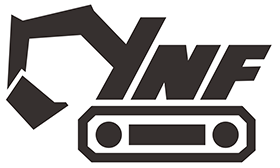For heavy-responsibility excavators, the needle bearing is one of the critical additives that allows the gadget to run smoothly. This small but extraordinary component guarantees that the excavator operates efficiently, with minimal friction and wear. Understanding excavator needle bearings and how they paint is essential, as it can prevent needless downtime and high-priced repairs.
1. What is a Needle Bearing?
A needle bearing is a curler bearing with cylindrical rollers that are much longer than their diameter. This layout permits an excessive load capability in a reasonably small package, making it ideal for programs like excavators where the area is restricted. Still, the need to deal with heavy masses is sizable.
Unlike traditional ball bearings, which use balls to reduce friction, needle bearings use lengthy, skinny rollers. These rollers help distribute the burden throughout a larger ground area, lowering pressure on individual components and allowing the bearing to hold the extra weight.
2. How Do Needle Bearings Work in Excavators?
In an excavator, needle bearings are typically used in the boom, arm, and bucket joints (wherever rotational movement occurs under heavy loads). These bearings contribute to smooth, low-pressure rotation and support the maximum load and pressure exerted by the machine during drilling and lifting.
In the mold, the roller rotates between the inner and outer supports, helping to reduce friction between the moving parts.
3. Why Are Needle Bearings Important for Excavators?
Needle bearings are vital for drillers because of the high torque and cargo they can withstand. Excavators are designed for heavy-responsibility jobs, from excavating rugged terrain to lifting tons of material. Failure to have a reliable field protecting the system’s shifting parts might have ended in premature machine failure, high friction, and mechanical failure.
4. Components of a Needle Bearing
Understanding the main components of a needle bearing will give you insight into how these parts work together to keep your excavator running efficiently:
- Inner Race: The innermost part of the bearing helps the rollers to rotate.
- Outer Race: The outer part that holds the bearing together and provides the surface for the rollers to move against.
- Rollers: The cylindrical elements that roll between the inner and outer race, reducing friction and bearing the load.
- Cage: The framework that holds the rollers in place and ensures even force distribution.
5. Types of Needle Bearings Used in Excavators
There are different types of needle bearings. Each is suitable for specific applications within an excavator. Some of the most common include:
5.1. Drawn-Cup Needle Bearings
These bearings, with a thin-walled outer shell, are ideal for limited-space applications. They offer high load-carrying capacity while minimizing the bearing assembly’s weight and footprint.
5.2. Thrust Needle Bearings
Dush needle bearings are designed to handle axial loads when the load is directed along the shaft’s axis. These bearings are commonly found in excavator slewing rings and pivot points that must manage heavy axial forces.
5.3. Caged Needle Bearings
These bearings feature a cage that holds the rollers in place, ensuring even spacing and load distribution. Caged needle bearings are preferred for high-speed applications where smooth operation is critical.
6. Common Applications of Needle Bearings in Excavators
Needle bearings are used in various parts of an excavator, including:
- Boom and Arm Joints: These are where heavy loads and repeated motions occur during digging and lifting.
- Track Tensioners: Helping to maintain the tension in the tracks for smooth movement.
- Swing Motors: Supporting the rotational movement of the excavator’s upper structure.
These components must operate with minimal friction and maximum durability to ensure the excavator performs optimally in demanding conditions.
7. Replacing Excavator Needle Bearings
Even with high-quality protection practices, your needle bearings will eventually need to be replaced. To ensure the best overall performance, always use first-rate, OEM-authorized needle bearings. Be sure to follow the manufacturer’s installation recommendations; consult a professional to avoid flawed installation if you’re uncertain.
8. Choosing the Right Needle Bearing for Your Excavator
When choosing a needle bearing for your excavator, consider the load, pace, and alertness. Different bearings are designed for varying ranges of torque and pressure, so deciding on one that matches your machine’s wishes is vital for lengthy-term overall performance. Consult the manufacturer’s specifications and select a bearing that offers the proper stability of sturdiness, load capability, and friction reduction.
Conclusion
In an excavator, needle bearings play a critical function in ensuring clean operation and increasing the existence of essential additives. By lowering friction, helping heavy hundreds, and taking into account unique motion, these small but powerful additives contribute considerably to your system’s general performance. Proper renovation, well-timed inspections, and selecting the perfect needle bearing can make all the distinction in stopping breakdowns and maintaining your excavator going for walks at its first class.





